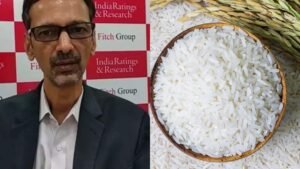According to a government senior official, after Bharat Atta (wheat flour) and Bharat Dal (lentil), the Centre is now planning to sell Bharat rice at concessional rates in a bid to curb rising food grain prices ahead of next year’s general elections.

Bharat rice will be offered at ₹25/kilo through some government agencies such as the National Agricultural Cooperative Marketing Federation of India (Nafed), the National Cooperative Consumers Federation of India Limited (NCCF), Central Bhandar outlets, and mobile vans.
Reason behind such an initiative; Inflation?
Foodgrain prices rose to 10.27% in November, pushing food inflation to 8.70% in November, up from 6.61% reported in the previous month.

The inflation of major foodgrains may pose a problem for the government in the run-up to the 2024 general elections. Therefore, the government has been taking this initiative for the past few months to reduce the high price of food.
The move follows the implementation of ‘Bharat Atta’ and ‘Bharat Dal’
The government of India has taken several steps to stabilize the prices of essential foodgrains, besides ensuring fair prices for farmers.
In July, ‘Bharat Dal’ (Channa Dal)was started by the Centre. Then, in early November ‘Bharat Ata’ (wheat flour) arrived. These products are distributed at 2,000 retail points.
The Centre has started selling ‘Bharat’ flour at an MRP of ₹ 27.50/kg. With the commencement of sales, customers have started getting flour and pulses at fair and affordable prices from these outlets.

One of its objectives was to fix MSP (minimum support price) for foodgrains and pulses, as well as coarse grains and millets, for farmers.
‘Bharat Rice’ at minimum price to tackle inflation
After that, the problem of rising prices of rice began to appear. The All India Average Retail Price of Rice has seen an increase. Rice reached Rs 43.3 per kg, reflecting a 14.1 percent increase over the previous year.
“There is always one objective: to reduce prices and thus, inflation,” said the senior official.
This step has been taken to increase the supply of grain in the market and increase the sale of rice under OMSS.
Food Corporation of India (FCI) has recently revised its OMSS rules for rice to increase the availability of rice under the Food Corporation of India’s (FCI) Open Market Sales Scheme (OMSS). The minimum and maximum quantity of rice that a bidder can bid has been fixed at 1 MT and 2000 MT, respectively.
India’s rice sales process is expected to follow the same model as ‘Bharat Daal’ and ‘Bharat Atta’.

Devendra Pant, chief Economist of India Ratings, told the media, that the subsidized foodgrains initiative indicates that economic growth figures may not accurately represent the situation at the bottom of the income pyramid.
He added that the persistent challenges faced by low-income groups, highlighting structural issues contributing to inflation in foodgrains and pulses.
Pant expects a gradual decline in the Consumer Price Index (CPI) to 4 percent by the end of the next fiscal, but he anticipates inflation to average around 5.2–5.3 percent for the current fiscal.











Comments 1